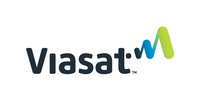Nokia announced U.K. carrier Three UK, part of CK Hutchison, will deploy the world’s first fully integrated cloud native core network leveraging the breadth of Nokia technologies.
The deployment will include Nokia’s AirFrame data center, IP routing and network management, Nokia CloudBand, Nuage Networks software defined networking, evolved packet core, IMS, TAS, SBC, Shared Data Layer, and security solutions. The company said the deployment will enable Three to leverage “the full benefit of the cloud architecture,” including huge scalability and improved reliability.
“This is a significant cloud core network deal with the potential to deliver a wide range of technology and business benefits to Three UK. As carriers gear up for the 5G future it is vital that their core networks are flexible enough to match 5G access network demands, especially in terms of latency and scalability,” David Snow, principal analyst at Current Analysis, said. “This deal demonstrates that Nokia has a wide range of cloud technologies and professional service assets which it can use to design and deploy such an end-to-end cloud core network solution.”
Nokia said it will begin deployment of Three UK’s new core network in multiple data center locations in the course of 2017.
Ericsson launched a new Security Manager tool that enables security orchestration for all ICT domains. According to the company, the solution automates security management according to policies, including continuous monitoring of threats, vulnerabilities, risks, and compliance with the ability to do automated remediation.
The Ericsson Security Manager is part of the Ericsson Digital Support System to support out-of-the-box security for cloud operations, enterprises, physical and virtual networks and digital support solutions. The company said the Security Manager will be the tool to set and enforce security policies to protect important assets by configuring security controls such as firewalls or block chain solutions to achieve the desired security architecture and provide predictive analytics to detect unwanted activity.
Huawei recently released a 3D 18-sector solution to meet the large capacity requirements of ultra-high traffic scenarios. The solution allows for deployment of 18 sectors at a single site, delivering 3.5 times the network capacity of traditional three-sector solutions.
The solution, based on the reconstruction of original sites, uses six-beam, split antennas that split the original three sectors, both horizontally and vertically, into 18, increasing air interface and cell resources, and substantially improving network capacity. It aims to provide users with an enhanced mobile broadband (MBB) experience in ultra-high traffic scenarios, including densely populated urban areas, at sporting events, during festivals, and at other large gatherings.
Huawei said the solution has already been tested and commercially deployed in countries including Bangladesh and Myanmar.
Trend Micro, a provider of cybersecurity solutions, is joining forces with NEC Corporation and NEC’s affiliate Netcracker Technology, providers of software-defined networking (SDN) and network functions virtualization (NFV) solutions, as well as business and operations support systems (BSS/OSS), to integrate NEC and Netcracker’s management and orchestration capabilities with Trend Micro’s Virtual Network Function Suite. The goal of the collaboration is to “create an effective, high-performance, and comprehensive virtualized network security solution that can be used in carrier-grade NFV deployments.”
Trend Micro said its Virtual Network Function Suite is designed to offer flexible, reliable, and high-performance virtual network security functions for CSPs from premise, to edge, to the core network. By validating and integrating Trend Micro’s Virtual Network Function Suite with the NEC/Netcracker NaaS solution, the companies will be able to work together closely to create further technical and business synergies as more NFV migrations occur.
“Virtualized and distributed NFV architectures require a ‘back to the drawing board’ approach on security. It is not sufficient to use paradigms used in legacy networks and apply them to the cloud-based and service chained networks of tomorrow,” says Rahul Chandra, vice president of NEC/Netcracker’s Worldwide SDN/NFV Business Development. “Through rigorous integration of (Trend Micro’s) solutions with NEC/Netcracker’s market-leading network as a service (NaaS) solution, we are excited to offer service providers highly secure and pre-integrated orchestration capabilities that can serve as a foundational and secure platform for supporting their virtualized service portfolios going forward.”
Filed Under: Cybersecurity, Infrastructure




